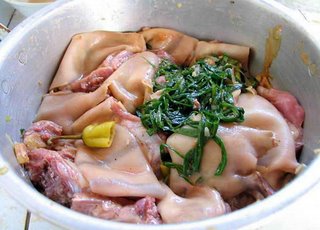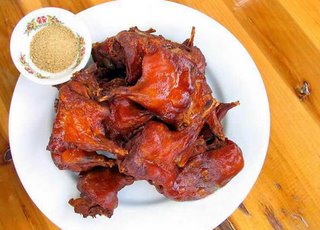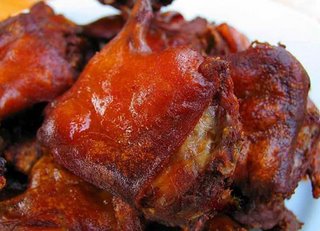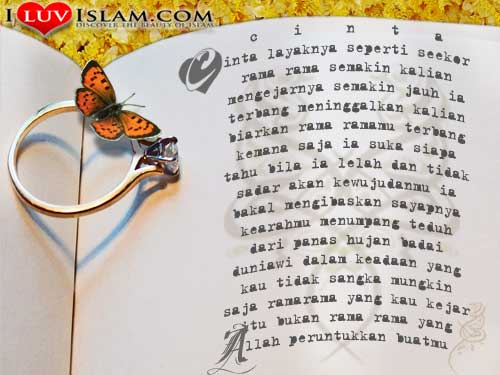dan ini adalah akhirnya.
Rabu, 04 Maret 2009
Minggu, 14 Desember 2008
hati -hatii bagi penggemar soto ayam,dkk
Untuk penggemar Soto Ayam, Sate ayam, mie ayam di pinggir jalan
waspadalah.. ... waspadalahhhhh. ...
Hati-hati... ..kelihatannya seperti daging ayam.... apakah benar daging ayam??
Tikuss!!!!
Dibakar utk menghilangkan bulu...
Dicuci sebelum dimasak....
Dipotong-potong sehingga menyerupai potongan daging ayam......
Persiapan utk di goreng....
Sebelumnya diberi bumbu....
Siap di santap....
weeckkk....
Mirip daging ayam...
Waspadalah.. ..waspadalah. ..jika anda makan direstoran.. ...!!!
forward/terusan dari rie_ndut_ich@yahoo.com
Subject: Re: [bdp6_news] Terusan: FW: Hati2 Untuk penggemar Soto Ayam, sate ayam, mie ayam yang dijual di pinggir jalan
setau gw nih...gbr itu adalah gbr dinegeri cina yg emang byk menjual makanan berbahan daging tikus. Percaya dech!!gak usah takut.. gw juga waktu riset ttg makanan manado yg byk berbahan dasar tikus, ada artikel yg mengulas tentang kuliner ini di cina dan foto itu adalah salah satu resto di cina yg sengaja jual daging tikus dan itu LEGAL KOK.SO DONT WORRY....
persahabatan
Persahabatan itu seperti tangan dengan mata..
Saat tangan terluka, mata menangis...
Saat mata menangis, tangan menghapusnya. .
Persahabatan
Apa yang kita alami demi teman kadang-kadang melelahkan dan menjengkelkan, tetapi itulah yang membuat persahabatan mempunyai nilai yang indah. Persahabatan sering menyuguhkan beberapa cobaan, tetapi persahabatan sejati bisa mengatasi cobaan itu bahkan bertumbuh bersama karenanya.
Persahabatan tidak terjalin secara otomatis tetapi membutuhkan proses yang panjang seperti besi menajamkan besi, demikianlah sahabat menajamkan sahabatnya.
Persahabatan diwarnai dengan berbagai pengalaman suka dan duka, dihibur-disakiti, diperhatikan- dikecewakan, didengar- diabaikan, dibantu-ditolak, namun semua ini tidak pernah sengaja dilakukan dengan tujuan kebencian.
Seorang sahabat tidak akan menyembunyikan kesalahan untuk menghindari perselisihan, justru karena kasihnya ia memberanikan diri menegur apa adanya.
Sahabat tidak pernah membungkus pukulan dengan ciuman, tetapi menyatakan apa yang amat menyakitkan dengan tujuan sahabatnya mau berubah.
Proses dari teman menjadi sahabat membutuhkan usaha pemeliharaan dari kesetiaan, tetapi bukan pada saat kita membutuhkan bantuan barulah kita memiliki motivasi mencari perhatian, pertolongan dan pernyataaan kasih dari orang lain,tetapi justru ia beriinisiatif memberikan dan mewujudkan apa yang dibutuhkan oleh sahabatnya.
Kerinduannya adalah menjadi bagian dari kehidupan sahabatnya, karena tidak ada persahabatan yang diawali dengan sikap egoistis.
Semua orang pasti membutuhkan sahabat sejati, namun tidak semua orang berhasil mendapatkannya. Banyak pula orang yang telah menikmati indahnya persahabatan, namun ada juga yang begitu hancur karena dikhianati sahabatnya.
Beberapa hal seringkali menjadi penghancur persahabatan antara lain:
1. Masalah bisnis UUD (Ujung-Ujungnya Duit)
2. Ketidakterbukaan
3. Kehilangan kepercayaan
4. Perubahan perasaan antar lawan jenis
5. Ketidak setiaan.
Tetapi penghancur persahabatan ini telah berhasil dipatahkan oleh sahabat-sahabat yang teruji kesejatian motivasinya.
Renungkan:
Mempunyai satu sahabat sejati lebih berharga dari seribu teman yang mementingkan diri sendiri.
"Dalam masa kejayaan, teman-teman mengenal kita. Dalam kesengsaraan, kita mengenal teman-teman kita." - Anonim -
Hargai dan peliharalah selalu persahabatan anda dengan mereka.
Kamis, 11 Desember 2008
4 ways to quit smoking
| ||||||||||||||||||||||||||
| If you smoke, you probably are quite aware that smoking is bad for your health — very bad, in fact. If you’ve been thinking about quitting, there is good news. There are more ways to kick the habit than ever before. Why bother? Even if you’ve smoked for years, you’ll greatly improve your health. Within days, your blood vessels will regain much of the normal function that is damaged by smoking. Within weeks, you’ll be able to taste food better, and your sense of smell will recover from tobacco’s assault. Within months, symptoms of chronic bronchitis ease up, and lung function improves within a year. Quitting reduces the risk of heart attack and stroke within two to five years. And the risk of lung cancer begins to drop substantially within five to nine years of quitting. How to quitThere are four basic strategies for quitting. Most smokers start by trying to quit on their own, but many end up needing several methods and making several attempts before they kick the habit.Strategy 1: Do it yourself Cutting back slowly rarely works; nearly everyone who tries slides back up to their usual dose of nicotine. Cold turkey is the way to go, but it takes preparation. And even without professional help, cooperation from family and friends can be important. Here are some tips:
Quitting may be hard, but it doesn’t have to be lonely. Many employers, health plans, and hospitals offer individual or group counseling. Your doctor or your local chapter of the American Lung Association or American Cancer Society can refer you to a program in your area. Telephone support can also help; you can try it for yourself by calling the National Smoking Cessation Hotline at 800-QUIT-NOW. Hypnosis is another alternative that has helped some smokers break free. Strategy 3: Nicotine-replacemen t therapy Nicotine replacement is safe. You’ll get less nicotine than from cigarettes, and you won’t get any of the tar, carbon monoxide, and other damaging substances in tobacco. Plan to start nicotine-replacemen t therapy—nicotine patches, gum, lozenges, inhalers, or nasal sprays—on the day you quit smoking. If you are a heavy smoker, you’ll need higher doses. Estimate how much nicotine you need based on an average of 1 to 2 milligrams (mg) of nicotine per cigarette. Start with the full dose, then gradually taper down over several months. Under-dosing is more common than overdosing, but you should not smoke while using nicotine-replacemen t therapy. Strategy 4: Prescription drugs
| ||||||||||||||||||||
| Notable from Harvard Medical School | |||||
| ** Overcoming Addiction: Paths toward recovery | |||||
| |||||
| [CLICK TO READ MORE or BUY] | |||||
| ** Viruses and Infectious Diseases: Protecting yourself from the invisible enemy | |||||
| |||||
| [CLICK TO READ MORE or BUY] | |||||
| What to do about a “superbug” | ||||||||||||||||||||
| Q: Every time I pick up my newspaper, I seem to read about a “superbug” called MRSA. I don’t want to be an alarmist, but I want to know how to protect my family. A. Staph. aureus (where the “SA” in MRSA comes from) does not live on animals or in nature. Unfortunately, though, it lives very happily in the human nose. At any one time, in fact, up to 30% of perfectly healthy people carry these germs. In the vast majority of cases, the bugs are harmless. But following a bout of influenza, they can slide down into the lungs to cause pneumonia. They can also spread from nose to hand to skin, where they may cause boils, abscesses, or serious infections of the skin and underlying tissues. Even more ominously, Staph. aureus can invade the bloodstream to cause life-threatening infections. Fortunately, these major infections are much, much less common than simple boils or simple nasal colonization. Staph. aureus is a very hardy critter that can survive on inanimate objects. The germ’s toughness also explains why it can spread from person-to-person by hand contact and from contaminated objects, even in hospitals. When penicillin was discovered in the 1940s, virtually all strains of Staph. aureus were vulnerable to this new antibiotic. But within a decade, bacterial mutants that could resist penicillin began to emerge. In 1959, scientists developed methicillin, an antibiotic that was able to kill penicillin-resistan t Staph. aureus. A large family of similar antibiotics soon followed and gained widespread use. Unfortunately, staph learned how to resist methicillin and similar drugs. Methicillin- resistant Staph. aureus, MRSA, was here. Community threatAt first, MRSA was found mostly in hospitals. But in the past few years, it has exploded into the community. In both settings, it behaves much like other staph, usually existing in the nose or on the skin without causing disease, sometimes producing boils and other mild infections, but occasionally causing life-threatening infections.Tough as it is, MRSA is vulnerable to special antibiotics. Doctors usually rely on vancomycin to treat hospitalized patients, but linezolid, daptomycin, and other drugs are useful alternatives. However, only one of these medications is effective in tablet form, and it is extremely expensive. Fortunately, many community-acquired strains of MRSA are susceptible to older oral antibiotics like clindamycin and trimethoprim- sulfamethoxazole, which are not helpful against hospital strains of MRSA. MRSA is a tough problem, and it shows signs of getting tougher. You can protect yourself and your family by washing your hands regularly; alcohol-based rubs are best. Don’t share personal items like razors or towels. Avoid direct contact with infected patients. And notify your doctor if you develop a skin infection or another problem that could signal MRSA. — Harvey B. Simon, M.D. Editor, Harvard Men’s Health Watch This Question and Answer first appeared in the November 2008 Harvard Men’s Health, available at www.health.harvard. edu/men. | ||||||||||||||||||||
| Harvard Medical School publishes authoritative Special Health Reports on a wide range of topics. Each report delivers practical information on diagnosis, treatment, and prevention of major health concerns in clear, easy-to-understand language. For more information on a specific topic, click the appropriate link below: Alzheimer’s, Arthritis, Bladder, Cholesterol, Depression, Diabetes, Digestion, Energy, Exercise, Eye Disease, Headache, Heart Disease, High Blood Pressure, Memory, Menopause, Prostate, Sexuality, Sleep, Stroke, Vitamins | |
| [Back to top] | |
| Harvard Medical School offers special reports on over 50 health topics. Visit our Web site at http://www.health. harvard.edu to find reports of interest to you and your family. Copyright 2008 by Harvard University. | |
| HEALTHbeat is distributed to individuals who have subscribed via the Harvard Health Publications Web site. You are currently subscribed to HEALTHbeat as ika_246@hotmail. com. | |
| PHONE ORDERS | |
| To order a subscription or special health report by phone, please call our toll-free number: 1-877-649-9457. | |
| EDIT YOUR SUBSCRIPTION PROFILE | |
| Update your name and email address, or subscribe to other free e-mail newsletters from Harvard Health Publications. | |
| UNSUBSCRIBE | |
| You can remove yourself from our e-mailing list at any time. | |
| TELL A FRIEND | |
| Share the gift of good health with your friends and family. We’ll send your friends an e-mail invitation to sign up for HEALTHbeat, and a FREE gift if they sign up. | |
| SUBSCRIBE TO HEALTHbeat | |
| Sign up to receive HEALTHbeat and other free e-mail newsletter from Harvard Health Publications. | |
| VIEW HEALTHbeat ARCHIVES. | |
| Read back issues of HEALTHbeat online. | |
| Harvard Health Publications Harvard Medical School 10 Shattuck Street, Suite 612 Boston, MA 02115 USA | Visit our Web site at: www.health.harvard. edu Email us at: HEALTHbeat@hms. harvard.edu |
| * Please note, we do not provide responses to personal medical concerns, nor can we supply related medical information other than what is available in our print products or Web site. For specific, personalized medical advice we encourage you to contact your physician. | |



